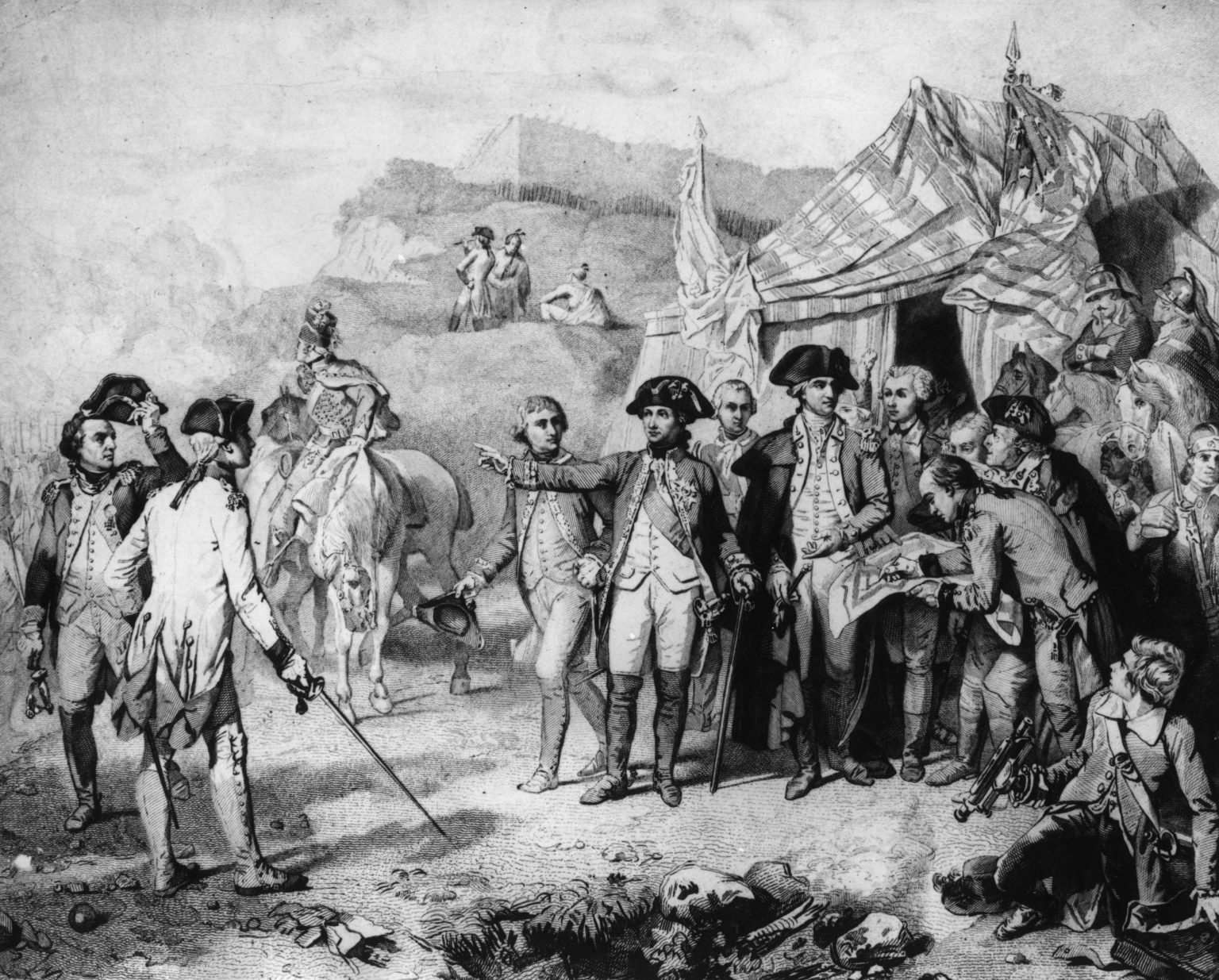The Siege of Yorktown, Virginia, is considered the decisive battle in America’s triumph over the British Empire in the War of Independence, ending on October 19, 1781, with the surrender of the British garrison led by Lord Charles Cornwallis. The Americans, aided by French troops, surrounded the Redcoats by both land and sea, with a significant show of force that left Cornwallis with no means of escape. The surrender signaled the end of British rule in the colonies and the birth of the United States of America.
Leading up to the Siege of Yorktown, George Washington and Comte de Rochambeau had been working on a plan to defeat the British under Gen. Henry Clinton in New York City. However, a change in plans occurred when they learned of the French fleet’s arrival in Chesapeake Bay. Washington quickly devised a new plan to leverage the French naval forces and attack Cornwallis’s troops in Yorktown. Through strategic deception and false information, Washington and Rochambeau were able to march on Yorktown and set siege to Cornwallis.
With nearly 19,000 troops, almost evenly split between American and French forces, surrounding the 9,000 Redcoats at Yorktown, Cornwallis realized his cause was hopeless and surrendered with relatively little loss of life. The victory for the Americans was overwhelming and decisive, marking the end of the American Revolution and the victory of the United States over British rule. Washington’s leadership during the Siege of Yorktown further solidified his reputation both nationally and internationally.
The siege of Yorktown is considered a turning point in America’s bid for independence, with the surrender of Cornwallis and his garrison signifying the end of British rule in the colonies. The American Revolution officially came to an end with the defeat of the Redcoats, and the United States emerged as a new nation on the world stage. Washington’s strategic planning and leadership, along with the support of the French forces, played a crucial role in securing the victory at Yorktown.
The Siege of Yorktown showcased the coordination and strategic planning of the American and French forces, who were able to leverage their combined strength to defeat the British at a crucial moment in the war. With Washington and Rochambeau leading the charge, the Americans were able to capitalize on the arrival of the French fleet in Chesapeake Bay and trap Cornwallis’s forces at Yorktown. The surrender of Cornwallis marked the end of British dominance in America and paved the way for the United States to establish itself as an independent nation.
The legacy of the Siege of Yorktown lives on as a pivotal moment in American history, marking the end of the War of Independence and the birth of the United States of America. Washington’s leadership during the siege earned him international acclaim, further solidifying his status as a revered figure in American history. The victory at Yorktown was a testament to the determination and resilience of the American forces, who, with the support of their French allies, were able to achieve a remarkable triumph over the mighty British Empire.


